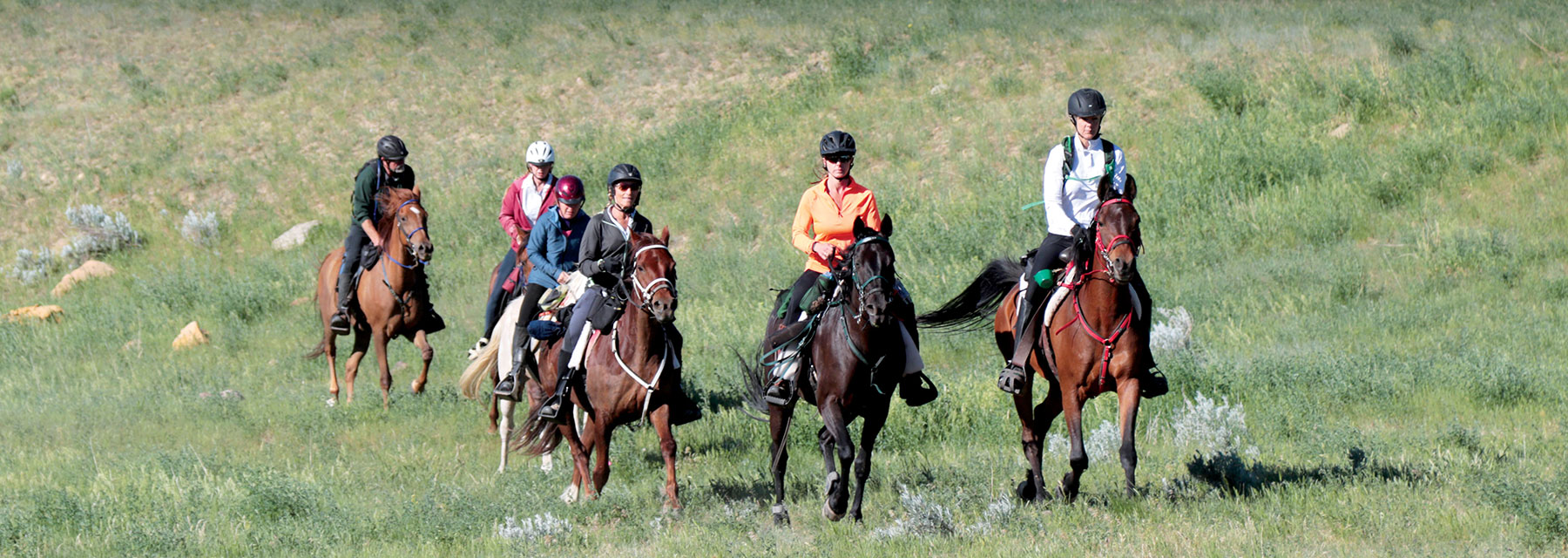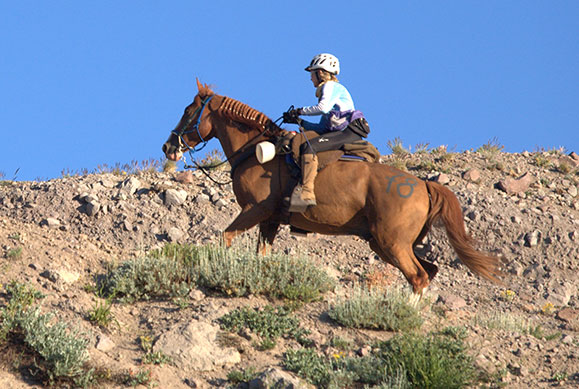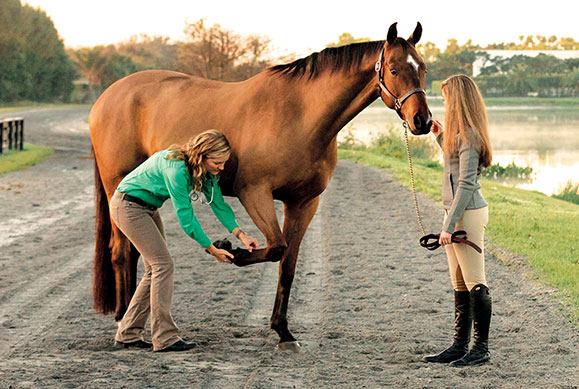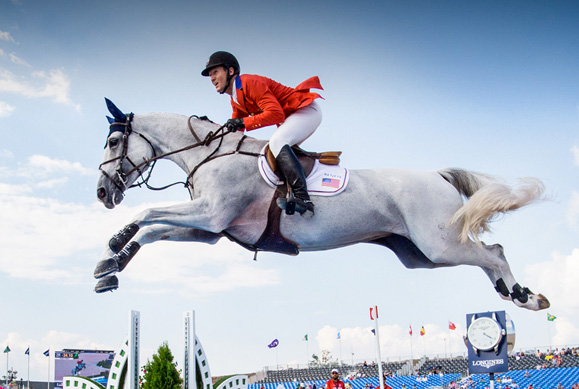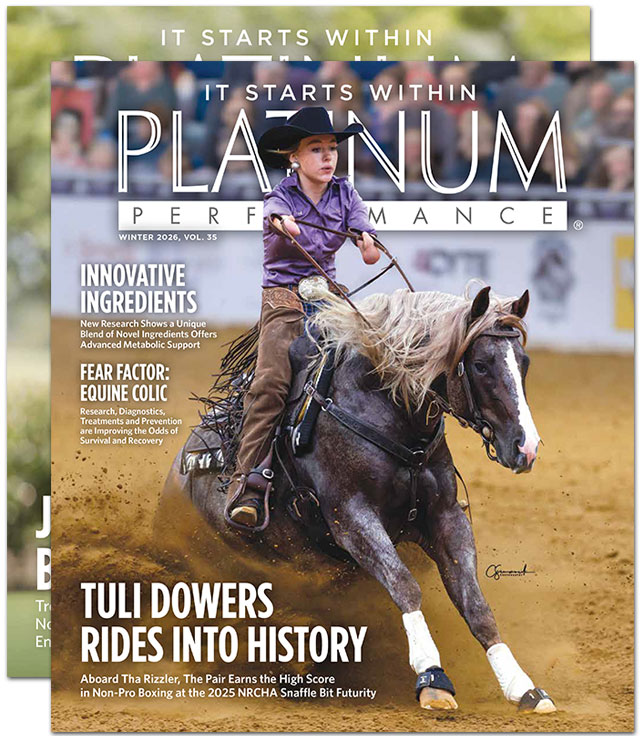Going the Distance
Endurance riding is very popular and continues to gain the interest of horse enthusiasts throughout the world. The discipline began in the United States in 1955 when Wendell Robie, an avid California horseman joined by a group of friends set out to disprove the notion that no modern-day horse could cover the rugged trail from Lake Tahoe to Auburn in a single day. Now called the Tevis Cup Ride, this 100-mile California feat winds along much of the historic Western States Trail from the Lake Tahoe area through the Sierra Nevada mountain range to the finish line in Auburn, located a half-hour northeast of Sacramento. In 1982, the Fédération Equestre Internationale, or FEI, the international governing body of equestrian sport, recognized endurance racing as an international sport. Despite its U.S. roots, the discipline has evolved into a very competitive sport worldwide — particularly in Europe, the United Arab Emirates, Australia and New Zealand. Any horse is welcome to compete, but the Arabian breed has dominated the sport since its inception due to their incredible natural stamina and durability.
The American Endurance Ride Conference (AERC) is the governing body for long-distance riding in the U.S. and offers over 700 races annually throughout North America for riders of all ages and ambitions, including shorter 25-mile courses. Most competitive endurance rides are 50, 75 or 100 miles long with different maximum times allowed depending on mileage length. Championship races are 100 miles completed in one day. There are also endurance rides that cover longer 150-mile trails over multiple days. Race courses can be set, such as the Tevis Cup, with horse and rider combinations traveling from one location to another, or more commonly in championship settings, courses have set “loops” that are completed several times in a race. The terrain is often undulating requiring uphill and downhill maneuvering over different types of footing and even through water crossings. Horses are checked before, during and after the race — known as “holds” — by qualified judges and veterinarians verifying that each animal is “fit to continue” both physically and metabolically. Historically, the sport required long distances at relatively low speeds but is now trending toward faster racing speeds. Today, some top-placing elite endurance horses average upwards of 12 to even 15 miles per hour — the equivalent of a medium canter — over 100-mile international tracks. The increase in pace over huge distances poses several challenges for the contemporary endurance horse, and feeding this elite equine athlete has become critically important and a significant focal point for competitive endurance riders.
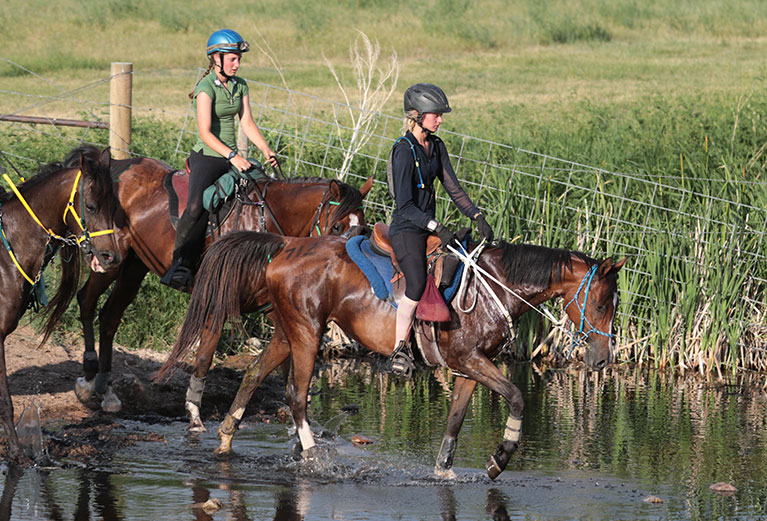
About the Sport
Most competitive endurance rides are 50, 75 or 100 miles long. Championship races are 100 miles completed in one day. The terrain is often undulating requiring uphill and downhill maneuvering over different types of footing and even through water crossings.
“Take care of the horse, and the horse will take care of the rest.”
— Holly Corcoran, One of America’s Top Endurance Riders
Feeding for Endurance
Endurance is one of the most demanding disciplines of equestrian sport, and some of the nutritional nuances for these horses are unique compared to other equine athletes. With the daunting fitness work required one thing is very important — fuel. The type and amount of feed needed must meet the high-energy demands of endurance conditioning, training and on race days. Conversely, unsuitable or inadequate nutrition will significantly limit the horse’s athleticism. The most common causes for poor performance or fatigue seen during endurance riding is the depletion of energy reserves, dehydration and electrolyte imbalances, or a combination of these issues.
The Arabian breed reigns supreme in the sport of endurance and most long-distance performance horses are either full Arabian or have Arab genetic influence. While this breed is often categorized as a metabolically easy-keeping type, during endurance training, it can often be difficult to supply enough calories to meet athletic output resulting in a horse with a thin body condition. Knowing the individual horse and assessing body condition throughout training is something that endurance trainers and riders closely monitor to ensure a horse is fit and at an appropriate weight. Nutrition tailored to the individual horse will allow him to compete to the best of his ability.
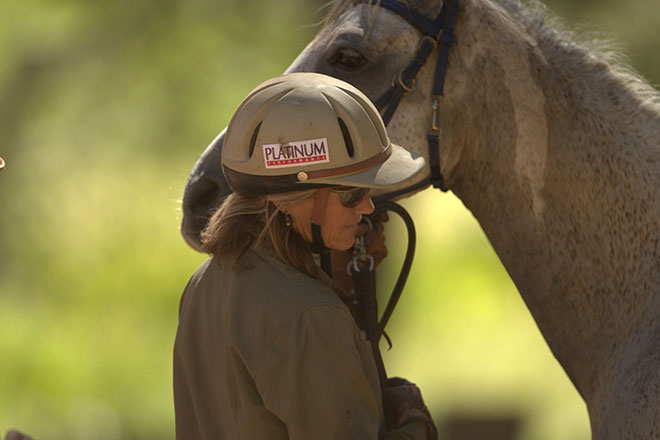
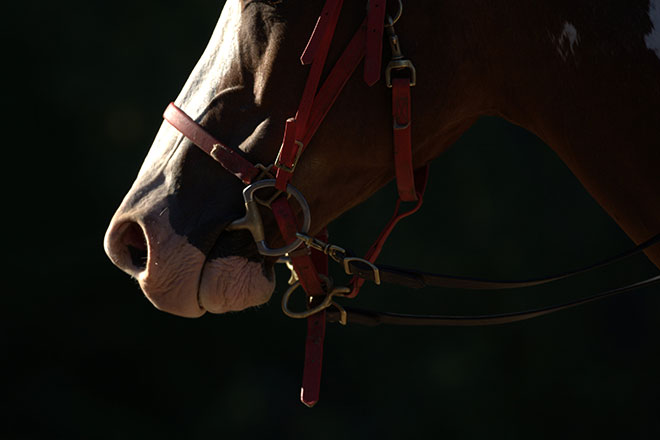
In a U.S. survey of competitive endurance riders, nearly eight in 10 riders gave their horses constant access to fresh pasture, and 78 percent of the diet was made up of forage, significantly higher in comparison to other equine athletes.
Start with Forage
All horses, regardless of breed, age or discipline, should be provided forage in the form of hay or pasture as the bulk of their diet to support healthy digestive function. In a U.S. survey of competitive endurance riders, nearly eight in 10 riders gave their horses constant access to fresh pasture, and 78 percent of the diet was made up of forage, significantly higher in comparison to other equine athletes. Experts recommend that a horse in endurance training be provided 1.5 to 2 percent of his body weight daily in good quality, long-stem forage (pasture or hay). Quality is key as overly mature forage will have lower digestibility and a reduced water retention capacity.
Forage provides slow release, consistent energy from fermentable fiber making it an ideal fuel base for endurance horses. The fiber provided by forage is digested via fermentation in the hindgut resulting in short-chain volatile fatty acids that are absorbed and serve as a substantial source of calories. Aside from the energy supplied, forage provides needed protein and amino acids, as well as essential vitamins and minerals. Water intake is also increased with dry hay consumption making it very beneficial to use before, during and after a race to boost water intake.
Many endurance riders use pasture, grass hay or a grass-alfalfa hay mix to satisfy forage requirements. Alfalfa is a very palatable and nutritious hay, but most endurance riders steer away from it as the primary forage source, particularly during heavy training and while racing. The elevated protein levels in alfalfa increase internal heat production as well as urine production thereby increasing water requirements. The high levels of calcium can also cause mobilization issues when the body is exercising hard for an extended period of time, actually creating a calcium deficit. Alfalfa is usually limited to a maximum 30 percent of the daily forage.

During intense endurance training, even the best quality forage may need to be supplemented with additional caloric sources to support total energy, particularly at higher-level racing. Endurance requires a horse to rely on energy reserves in order to support normal muscle contraction and prevent fatigue. It is critical for caloric demands to be met, or athletic performance will suffer.
Add Energy
During intense endurance training, even the best quality forage may need to be supplemented with additional caloric sources to support total energy, particularly at higher-level racing. Endurance requires a horse to rely on energy reserves in order to support normal muscle contraction and prevent fatigue. It is critical for caloric demands to be met, or athletic performance will suffer.
Using “super fibers” such as beet pulp and soy hulls to augment the diet is a common way to provide an easy-to-digest, high-fiber source of healthy energy. These feeds contain less indigestible fiber and higher non-starch polysaccharides than typical forage that provides more calories per pound with low levels of starch and sugar. The fiber content from these feeds operates as a sort of “sponge” in the hindgut, acting as a reservoir and retaining water and electrolytes to assist in hydration. These types of feeds may reduce the need for grains in the diet and are an excellent choice for endurance horses that require more calories to support body condition than what forage alone can provide.
Fat can be a beneficial energy source used for the endurance horse’s predominantly aerobic activity. As herbivores, horses evolved on a diet low in natural fat. However, they can digest and utilize up to 20 percent of the diet as fat. Oils and high-fat feeds, such as rice bran, are an excellent calorie source for the endurance horse due to a reduction in metabolic heat production and a lesser amount of overall feed quantity needed to satisfy total energy requirement, all while minimizing starch and sugar content in the diet. Fat sources provide more than 2.5 times as many calories per unit of cereal grains. Horses acclimated to using fat sources for energy may also implement a glycogen-sparing effect; they are able to utilize fat as a preferred energy source rather than depleting muscle and liver glycogen — thereby “sparing” glycogen reserves and delaying fatigue. Daily fat or oil should be introduced gradually into the diet — over 14 to 21 days — to allow the digestive system to adapt and avoid intestinal disturbances. It is recommended to allow several weeks during conditioning to acclimate the horse’s metabolism to utilize fat effectively. All oils are not created equal, and oils high in omega-3 fatty acids, like flaxseed oil, are preferred over corn oil, which contains an imbalanced level of omega-6 fatty acids.
Most experts agree that endurance horses should be primarily fed a low-sugar or low-starch diet for optimal digestive health, healthy insulin response and to prevent complications from tying-up or continuous muscle contractions. However, some quick energy carbohydrates, including starch, can be useful to maintain glycogen stores and prevent exhaustion, especially during a race. With unusually high daily energy requirements, endurance horses may rely on some starch in their diet to maintain body weight as well. It is recommended to feed the minimum amount of grain or grain-based concentrates to support workload and body condition. Grains that are processed — extruded, pelleted, steam-flaked, etc. — are more digestible than whole grains and reduce the risk of excess starch overwhelming the small intestine and escaping into the hindgut. Grains and concentrates should be broken up into multiple feedings per day, limiting meals to less than 3.5 pounds per feeding.
Protein is not an efficient energy source — it requires more internal energy and heat production to be broken down in comparison to fats or carbohydrates. Excessive or high dietary protein is unnecessary and should be avoided as it also requires more water to metabolize. However, it is important to make sure that the endurance horse has enough dietary protein to support muscle tissue repair, rebuilding and strength, as well as to replace nitrogen losses in sweat. Instead of focusing on general crude protein or a percent of the diet, ensure that amino acids, specifically lysine, are provided.

PHOTO BY DAVID STOECKLEIN
Supplements for Success
A comprehensive vitamin, trace mineral and omega-3 fatty acid supplement will round out a typical endurance horse’s diet and ensure that micronutrients are supplied.
With harder and more aerobic exercise, there will be an increase in free radical activity that may be correlated to muscle damage and fatigue. Antioxidant supplementation is suggested for horses in hard work. Vitamins C and E and selenium are valuable antioxidant nutrients. Natural vitamin E is a powerful antioxidant that is safely supplemented and recommended particularly for horses on fat-added diets. Selenium has a narrower toxicity threshold. Supplement with care after adding up total selenium content from all feed sources.
The branched-chain amino acids — leucine, isoleucine and valine — are mobilized during long-distance exercise. Supplementing BCAAs may support muscle preservation during hard and prolonged exercise and support protein synthesis and muscle recovery.
Probiotics are often supplemented daily to support healthy microflora in the hindgut. A healthy gut will keep the horse feeling its best, support his appetite and help buffer the hindgut from the stresses of travel and competition.
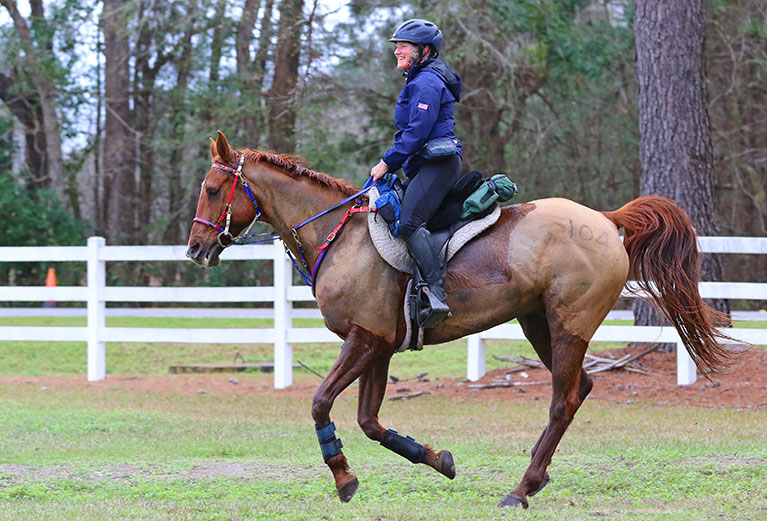
Hydration is extremely important for the health of the endurance horse, particularly during heavy training and on race day. On average, competitive endurance horses lose about 12 to 16 gallons of sweat by the end of a race. Dehydration is the top reason that endurance horses are eliminated from finishing a race.
Monitor Hydration
Hydration is extremely important for the health of the endurance horse, particularly during heavy training and on race day.
Horses will have significant fluid losses through sweat, particularly in hot, humid conditions. Competitive endurance horses on average lose about 5 percent of their total body weight and 12 to 16 gallons of sweat by the end of a race. Dehydration and electrolyte imbalance — sodium, chloride and potassium in particular — can predispose the horse for related health issues, including heat stress, tying up, colic and exhaustion syndrome. Significant electrolyte imbalances seen in fatigued or dehydrated horses paired with heavy sweating, may cause a specific health issue sometimes seen in endurance horses known as synchronous diaphragmatic flutter (SDF), commonly called “thumps,” a condition characterized by hiccup-like contractions of the horse’s diaphragm. The inability to replace liquids lost to sweating can result in substantially-declined performance. Dehydration is the top reason that endurance horses are eliminated from finishing a race.
Plain, white salt should always be available. For hard working horses, loose salt can be offered or added to feed gradually. Additional electrolytes should be used during training to replace minerals lost in sweat as well as to encourage water intake. Feed electrolytes after rides or exercise. Electrolyte powders can be added to feed as long as the horse will willingly eat it, or make an oral syringe of powder mixed with water, applesauce, yogurt or liquid antacid to help buffer the stomach. If using a commercial electrolyte, make sure that salt (sodium chloride) is the top ingredient, not sugar. Electrolytes ideally should be fed after the horse eats or drinks.
Always provide clean, fresh water. To increase hydration, many endurance riders offer mashes or wet feeds during competition. It is a good idea to get horses used to any wet feeds during training if it is a change from how they are normally fed. Increasing hydration in any way possible on race day is worth the extra management effort at home.
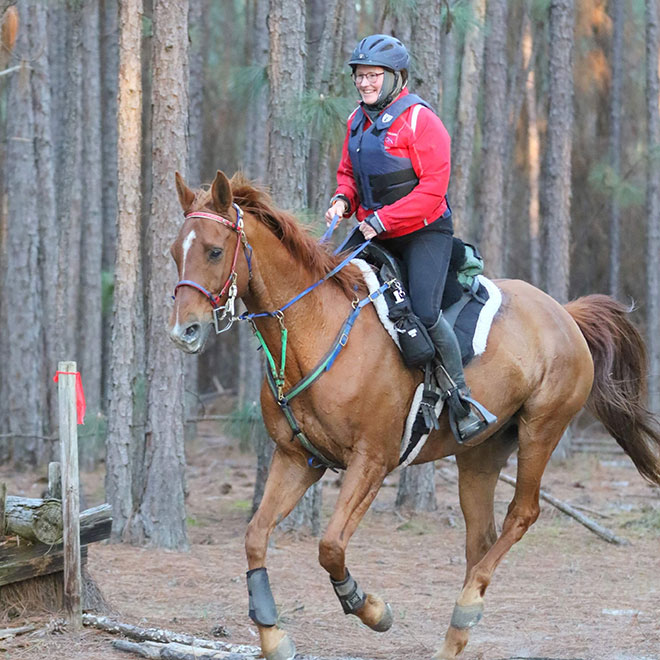
Meet Holly Corcoran:
A Top U.S. Endurance Rider
One of America’s best, she was the No. 1-ranked FEI endurance rider worldwide in 2020.
Read More
by Emily Smith, MS,
Platinum Performance®
